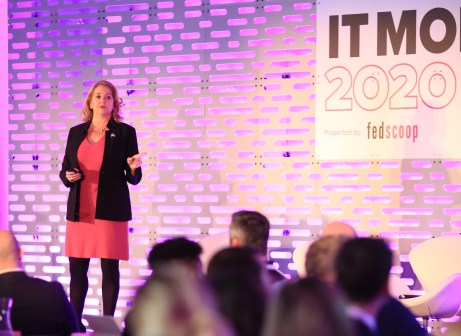A recent study from the Mobile Work Exchange reported potential governmentwide savings of $60 million in work continuity during disruptive weather and $15.1 billion per year in real estate reduction, both of which come from implementing a more robust telework and mobility policy. But for some mobility trail blazers in government, the biggest concern isn’t the money but instead losing out to the competition in attracting a talented workforce for the future.
Rick Walsh, the mobility lead in the U.S. Army’s Office of the Chief Information Officer, described how the wrong technology in the hands of a recruiter can be all it takes to miss out on a stellar candidate.
“The Army is in a position where we’re having to compete for the premiere candidates,” Walsh said, speaking Thursday during a webinar focused on the mobility study and the nature of high school recruiting fairs. “When my recruiter sits down with a Palm Pilot or an old laptop, the young men and women are walking right past our space.”
Walsh’s fellow panelists — Doug Bourgeois, vice president of end user computing for the public sector at VMware and former CIO of U.S. Patent and Trademark Office, and Bill Powers, senior advisor for mobility work programs at the National Protection and Programs Directorate — agreed, emphasizing that for the new generation of workers entering federal government, advanced technology and a mobile lifestyle is second nature.
“It really boils down to the expectations of the employees themselves,” Bourgeois said, referencing his experience transitioning USPTO to a mobile agency. “For instance, college graduates continue to enter the workforce, and they don’t just expect access to these devices and a mobile environment — it’s really all they know. The government really needs to embrace mobile technologies” to compete, or this next generation is going to continue to “shy away” from joining the federal workforce, he said.
Of course, the new workers are only part of the equation, and convincing experienced leadership to take a risk on the change is often a difficult task without “hard savings,” which Walsh said he is struggling with in the Army. Though he’s made the argument how keeping workers away from the office one day a week can equate to millions in savings yearly, he said his branch wants something more quantifiable.
“The Army and the [Defense Department] want hard savings,” he said. “I need to reduce my costs with tangible, hard reductions. The real bang for investment is really showing leadership that these devices work.”
Powers, a firm believer that mobility and telework will produce strong returns on investment even if not right away, said improved work-life balance and employee well-being through the transformation will “parlay into cost reduction through employee retention.” His work with a mobility return-on-investment calculator predicts huge cost reductions in things like utilities, real estate and travel, as well as other long-term but less-tangible savings. And aside from attracting a young, mobile-minded workforce, Powers said that through mobility, “we no longer are strapped to a geographical area and can hire from a more talented work pool.”
Still, while budgetary concerns and security are issues in the transition, the biggest hurdle to overcome is “the buy-in and support from the top, because it represents change,” Bourgeois said. As he pointed out, the culture is not yet there: Though about 50 percent of the federal workforce is eligible to telework, few do because of management concerns.
The supporting evidence begs for increased federal mobility. Moderator Mika Cross, a presidential management council fellow for workplace transformation strategy, made several points throughout the webinar that make it hard to argue against a mobile workforce. By 2015, she said, there will be nearly 14 billion mobile devices used around the world, roughly two per person. Also, in the mobility study, about 70 percent of responding agencies said they’ve already seen returns on their investments in mobility; of those who didn’t, more than half expected to see them in the next three years. Lastly, and perhaps the biggest testament to the mobile movement, Cross said the highest rated places to work in the federal government are also coincidentally high adopters of mobility practices.






